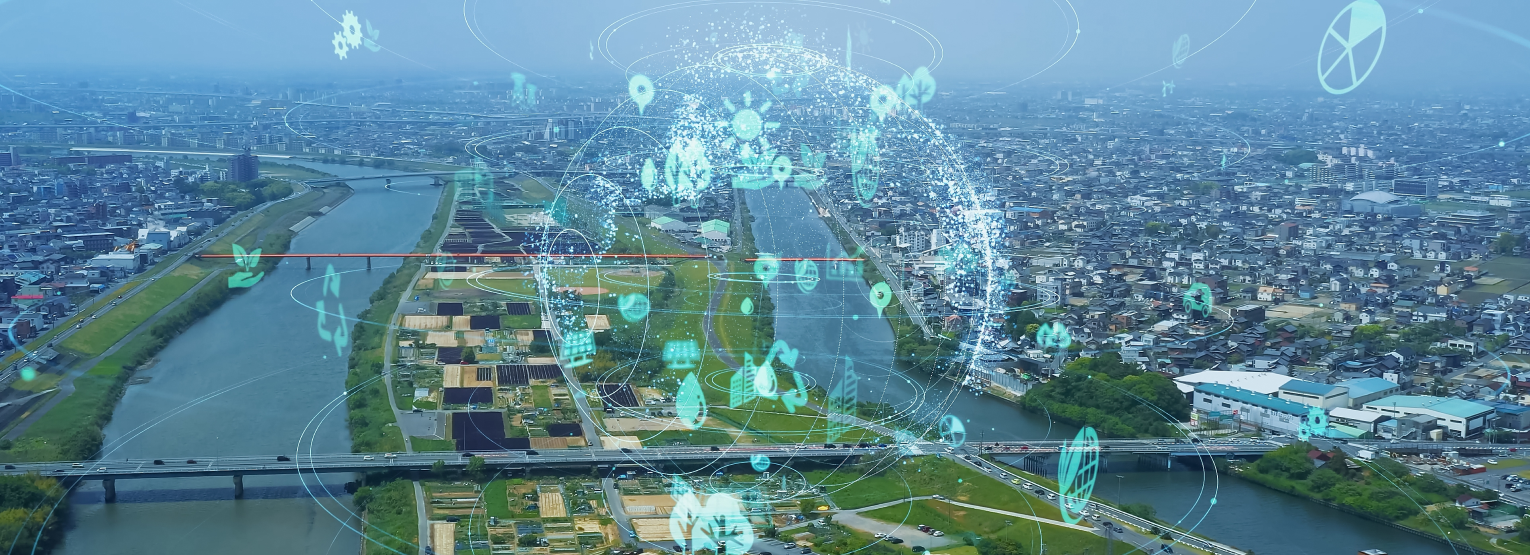Modern infrastructure requires constant monitoring, prompt response to failures, and ongoing data collection for efficient management. In urban areas, this has long been made possible by well-developed communication networks. However, ensuring connectivity in hard-to-reach areas where stable cellular coverage is lacking and laying cables too costly or impractical, has always presented serious challenges.
This is where Internet of Things (IoT) technologies come into play—specifically LoRaWAN and NB-IoT. These wireless communication protocols enable remote assets to be connected to tracking and control systems without the need for expensive infrastructure. In short, IoT solutions for remote monitoring have opened the door to visibility and control in places that were previously out of reach.
LoRaWAN: Wide range and autonomy
LoRaWAN (Long Range Wide Area Network) has proven especially effective in rural areas, mountainous regions, and large-scale industrial sites. The main advantage of LoRaWAN infrastructure management is its long communication range—up to 15 km in open areas and 2–5 km in urban settings. This is achieved through low-frequency transmission and unique signal modulation techniques.
Long-range IoT networks are ideal for monitoring infrastructure such as pumping stations, weather posts, power lines, or hydraulic structures. Crucially, LoRaWAN low-power devices can operate on battery power for up to 5–10 years, making them especially valuable in locations where rural connectivity is difficult, either because they are hard to access or rarely serviced.
NB-IoT: Reliability within mobile networks
Unlike LoRaWAN, NB-IoT (Narrowband Internet of Things) utilizes existing cellular infrastructure but operates on a narrow, dedicated frequency band for IoT devices. This allows thousands of sensors to connect to a single base station and transmit data reliably—even in poor signal conditions such as underground, in basements, or behind thick walls.
NB-IoT has become an attractive solution for municipalities and utilities that want to leverage the existing mobile network without building their own infrastructure. In cities and populated areas, it is used to monitor street lighting, air quality, waste collection, traffic signals, and other systems where reliable data transmission is essential.
From data collection to prediction
Both technologies offer more than just data collection—they also enable integration with analytics platforms and cloud services. This allows for real-time monitoring, predictive maintenance, logistics optimization, and better decision-making.
For example, sensors on pipelines in permafrost regions can track temperature fluctuations and transmit data in real time. By analyzing this information, it is possible to predict risks such as leaks or structural damage and take action before failures occur.
Real-world applications
LoRaWAN and NB-IoT are already widely used in remote regions of Europe, Asia, and elsewhere for remote data collection. LoRaWAN use cases include monitoring river and reservoir water levels, snowpack conditions, seismic activity, the structural health of bridges and roads, and providing data from weather stations and energy networks. They are also commonly used as part of smart farming solutions.
These wireless-sensor networks can be deployed even in harsh climates, operate autonomously for years, and reliably transmit data with minimal operational costs. Their implementation is particularly valuable in areas with complex terrain, limited logistics, and restricted access to service personnel.
A sustainable future for infrastructure
As attention to sustainability and digital transformation grows, LoRaWAN and NB-IoT are becoming key enablers of intelligent, resource-efficient infrastructure. They help reduce the need for on-site visits, lower energy and fuel consumption, minimize downtime, and boost operational efficiency.
These technologies not only extend the reach of infrastructure management but also set a new standard—where long-range communication means that even the most remote assets become part of a unified digital ecosystem. Remote infrastructure monitoring combined with network scalability in rural regions is no longer a vision of the future—it’s a reality being actively implemented today.
 837
837




